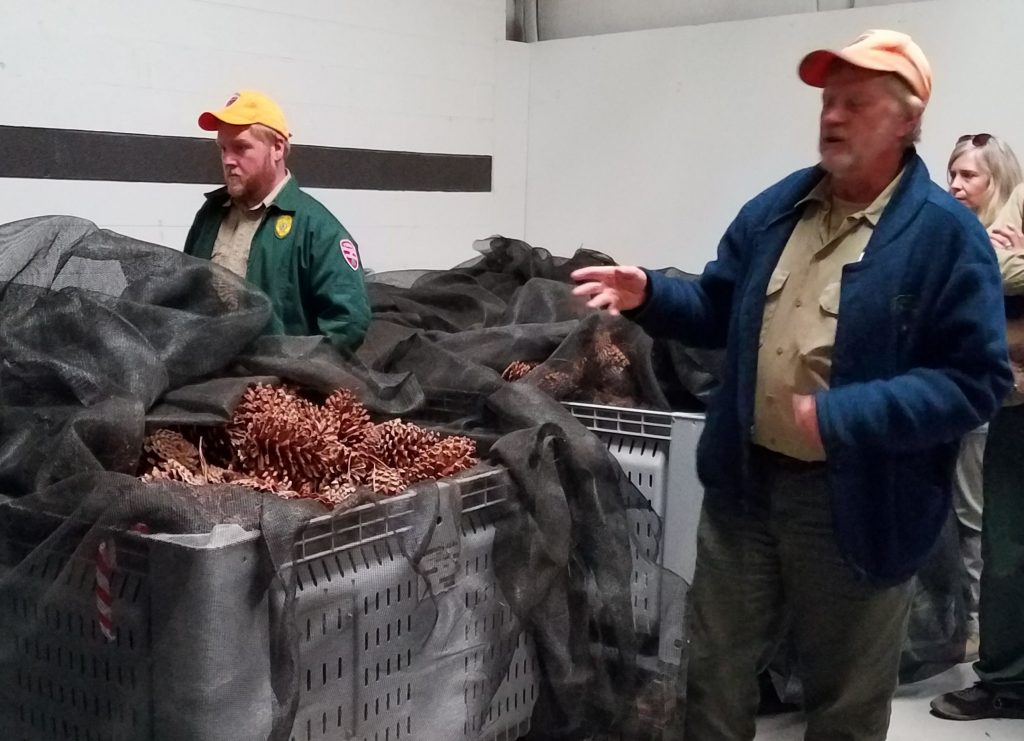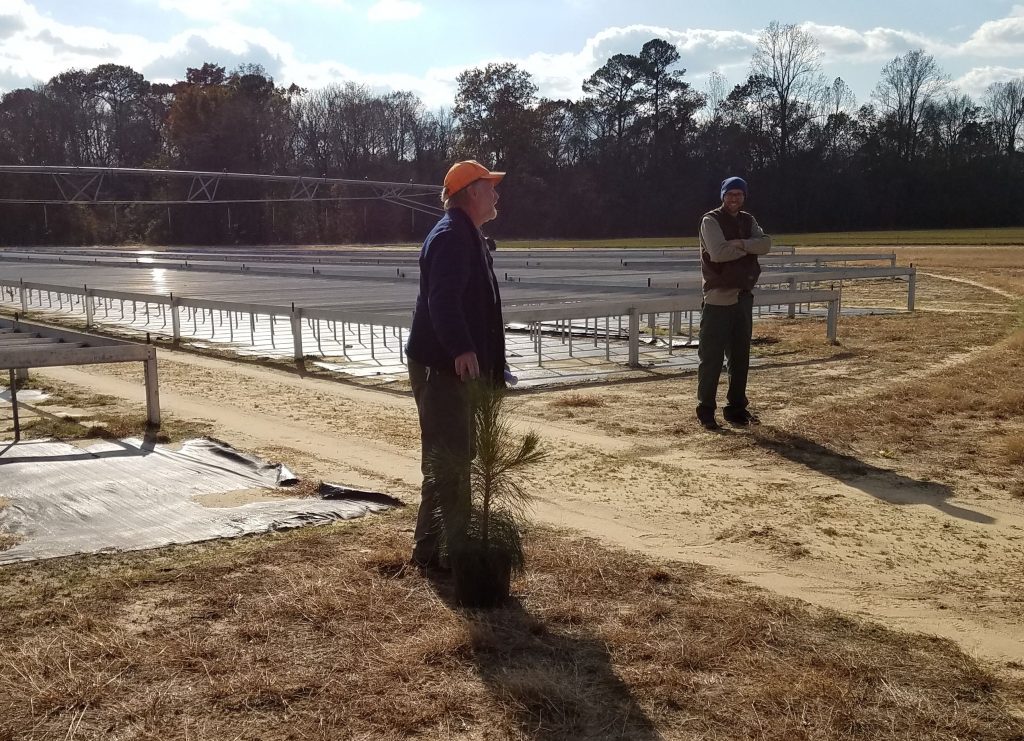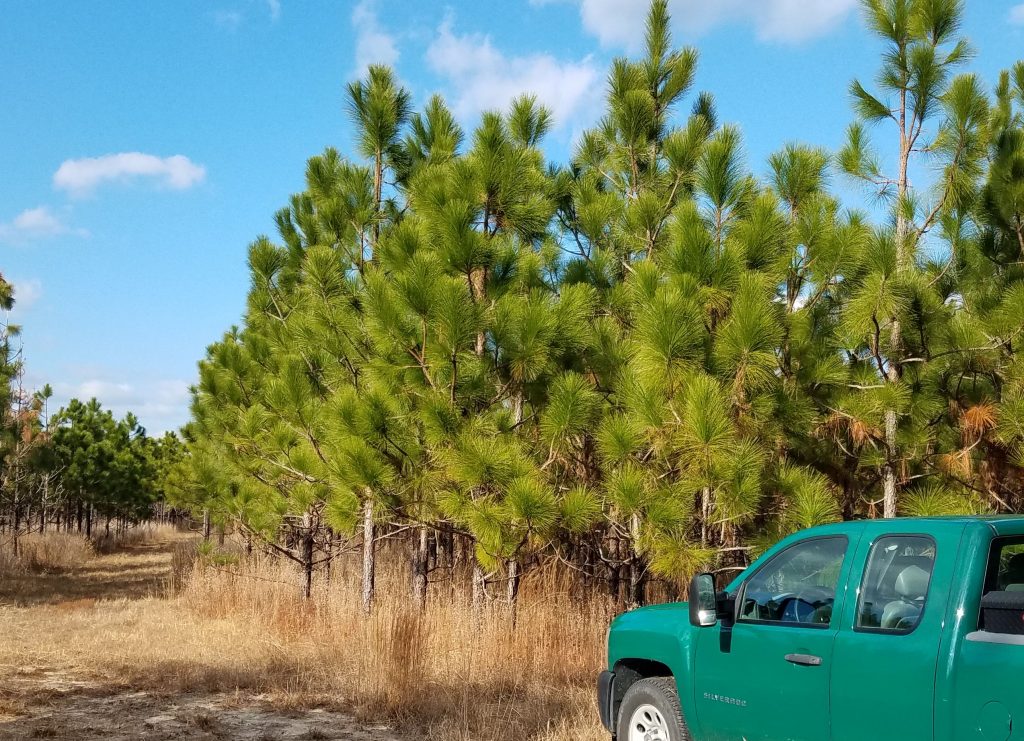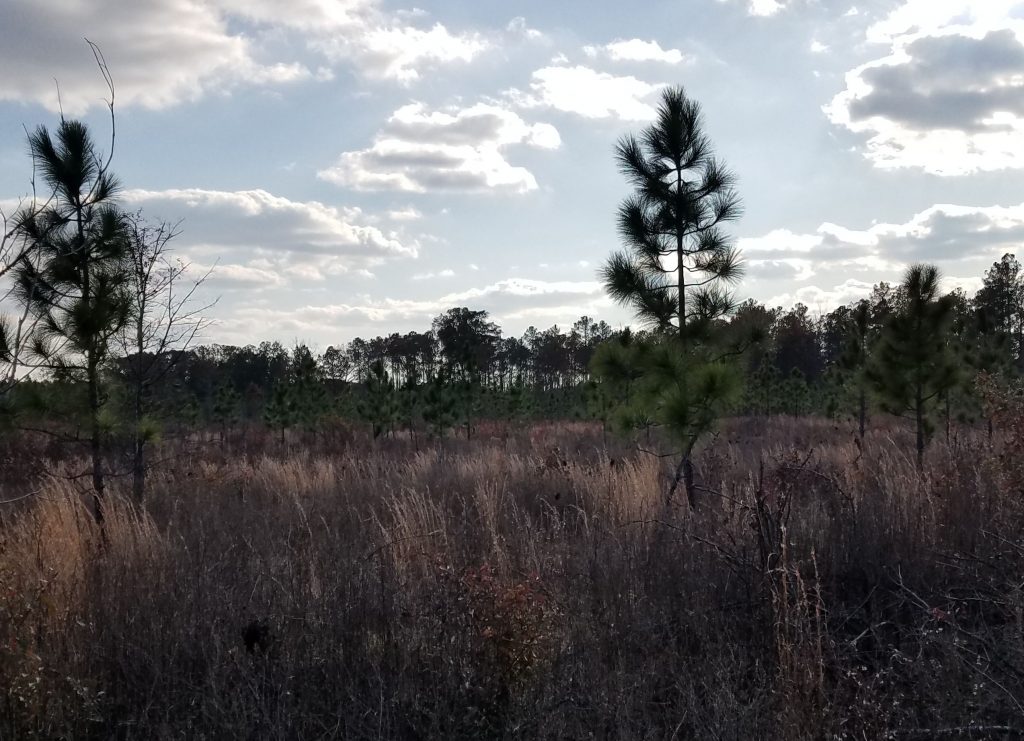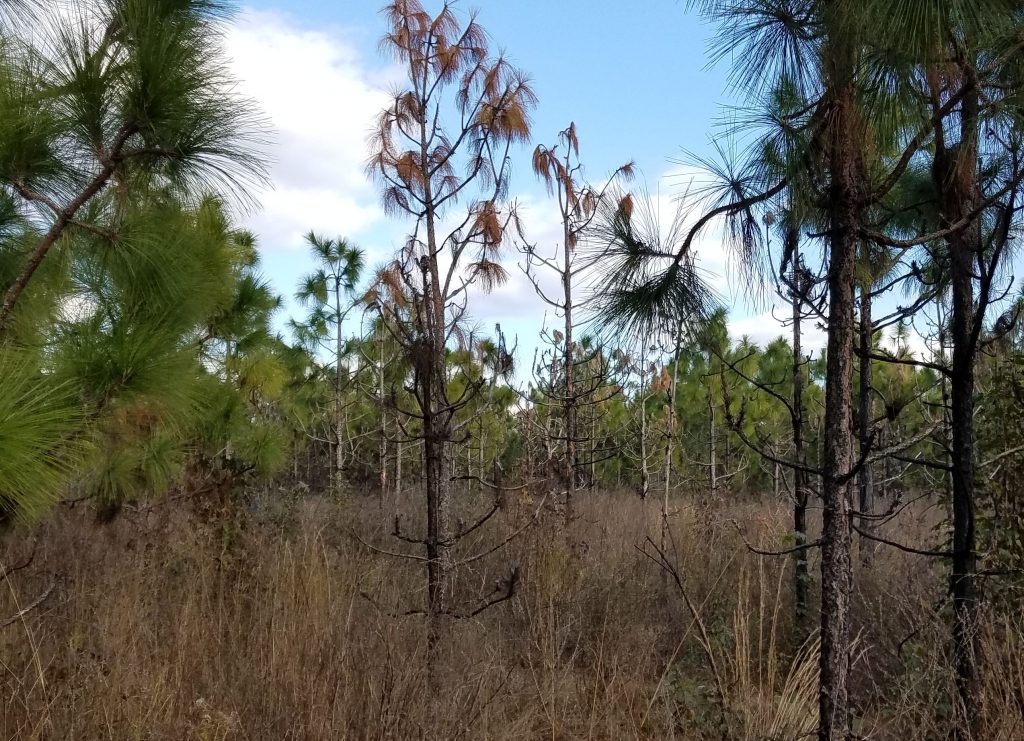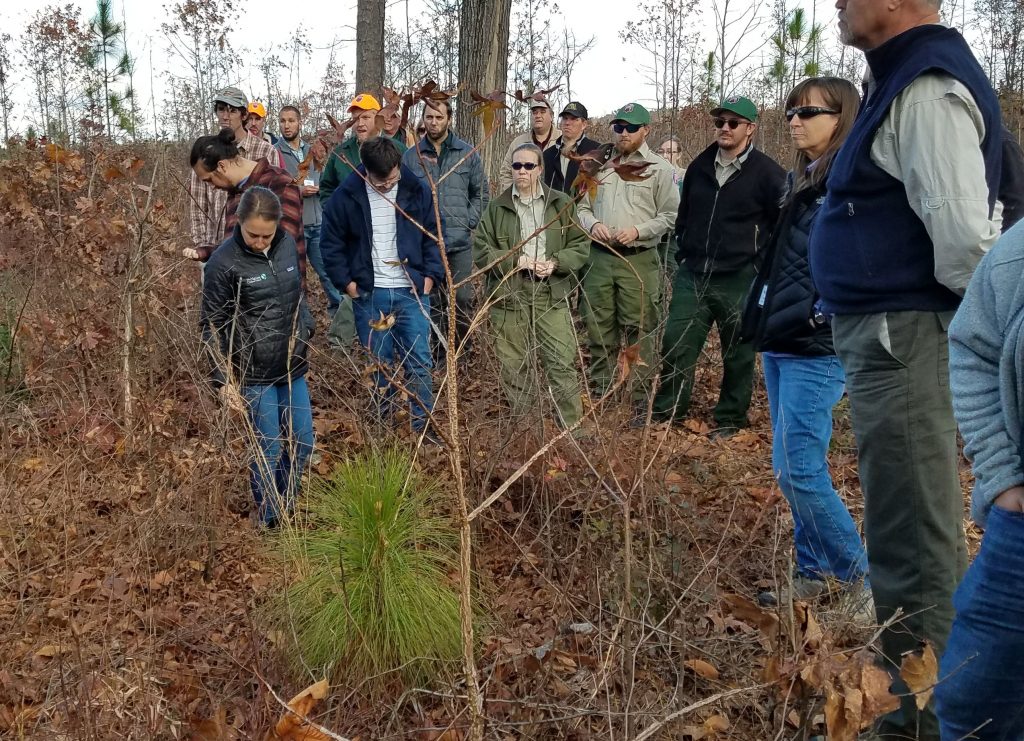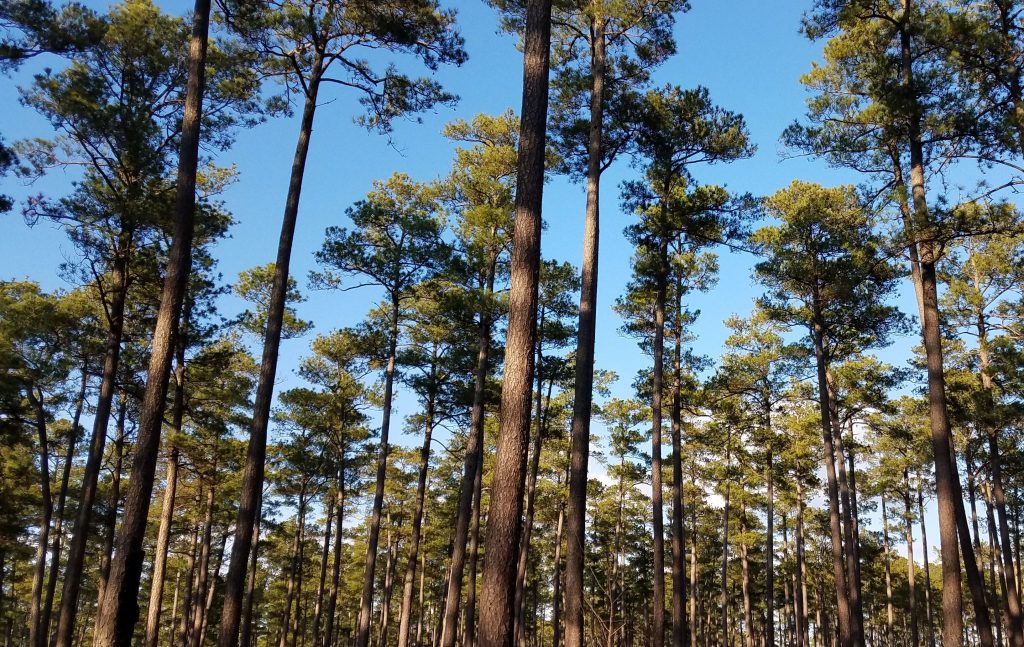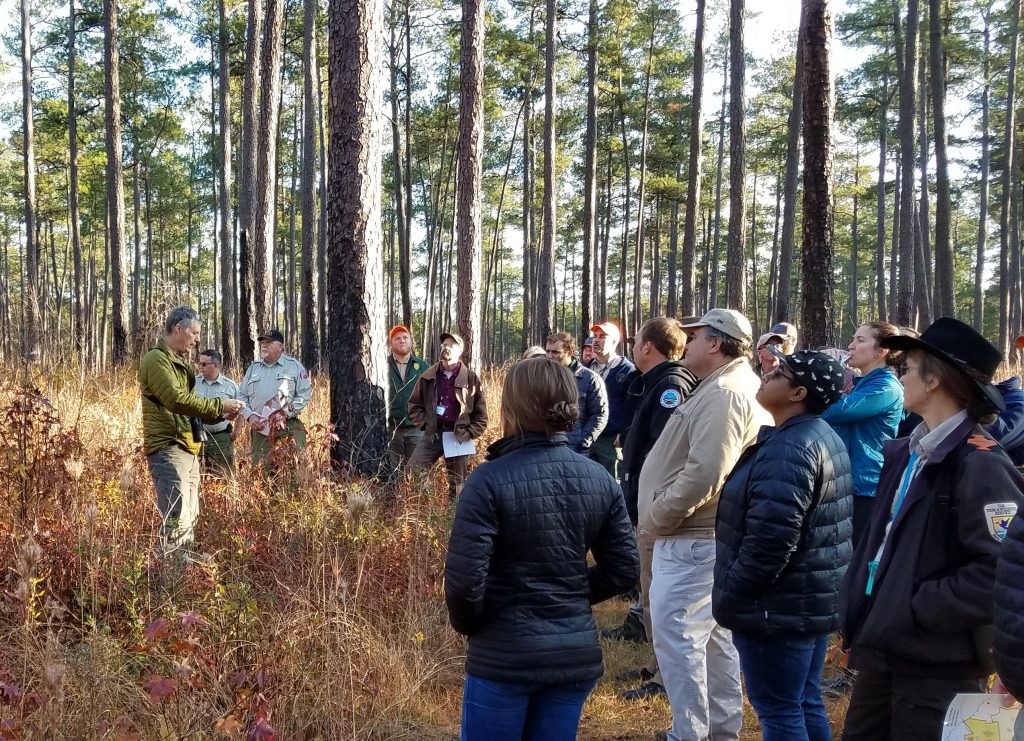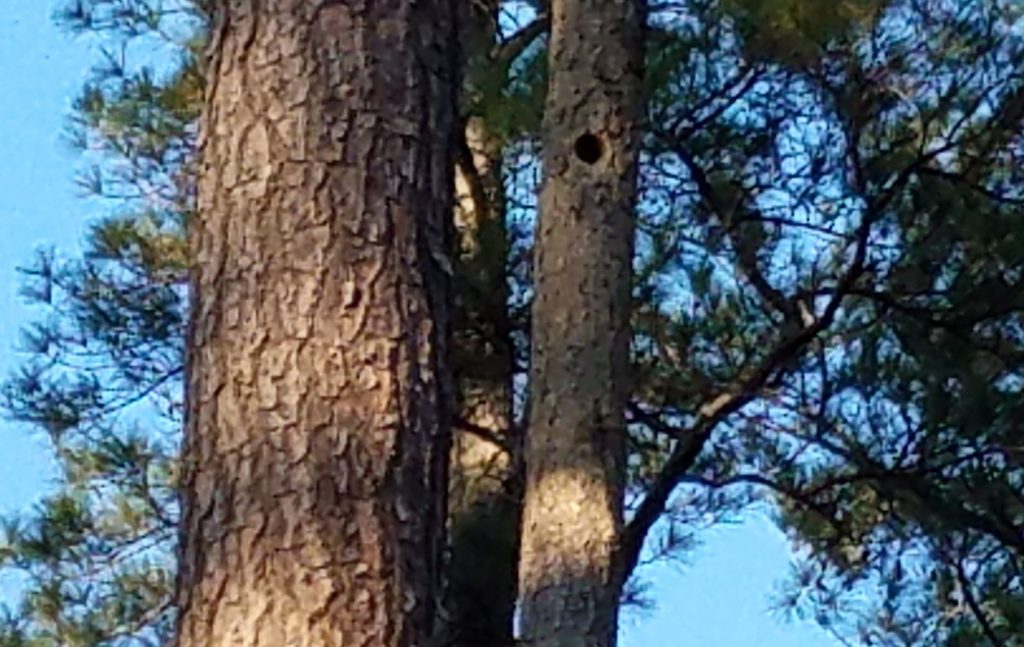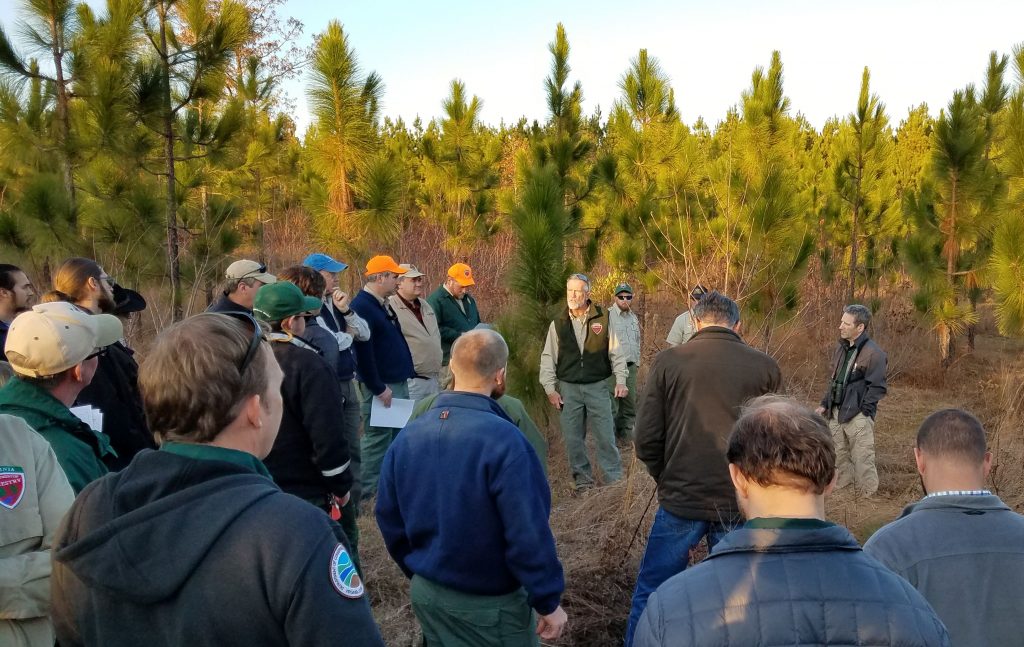There was a lot more to the Longleaf Academy than I will report. This is not a summary, but rather my take-aways. This was the first Longleaf Academy in Virginia, but there were literally a hundred before. 2600 people have graduated from “longleaf 101.” I attended one in Georgia a couple years ago. This one was different in specifics, but similar in the basics.
More longleaf growing
First the good news. We (longleaf advocates) are succeeding in bringing longleaf back from the edge of the abyss. Longleaf today is the second most planted species in the USA. About 1.5 million longleaf seedings were planted last year in Virginia (and I understand 60-70 million in the USA total). There is nothing like the extensive longleaf ecosystem that covered southeast North America when the first settlers arrived. Longleaf ecosystems will never again be as extensive as they were and it will take many years to restore something even approximating the full-complement of species, but it is a good start. `
Only 200 Virginia native longleaf survived in 2000. From this base, Virginia Department of Forestry has been gathering seeds and last year the Garland Gray Nursery produced 126,000 native Virginia seedlings. That is still not enough to satisfy demand in Virginia, and most of these seedlings go to official plantings, not individual landowners, but it is getting there.
Longleaf on the Virginia piedmont
Let me voice an apostate opinion. The trees I plant on my land are from North Carolina. I am unconcerned about the “native” factor. My thinking is that nature doesn’t recognize that line separating Virginia from North Carolina. Ecological conditions matter. Virginia has roughly three regions: tidewater/coastal plain, piedmont & mountains. There are subtle differences in climate and more significant ones in soils and topography. My land is in the Virginia piedmont, less than fifteen miles north of the North Carolina border. I can drive 100 miles south along I-85 and not see significant differences, but If I drive 50 miles east along US 58, conditions are very noticeable different. My land features more of the clay soils of the piedmont than the sandy ones found on the tidewater. Conventional wisdom held that longleaf prefers sandy soils because they were usually found in sandy soil, but they also thrive in heavier clay soils. My own longleaf are a testament to that. Maybe they are found mostly in sandy soils is just because sandy soils were not good for agriculture, so they left them alone.
My part of the Virginia piedmont is more like the adjacent North Carolina piedmont than it is like the Virginia tidewater, where the current crop of native Virginia longleaf come from. Botanists tell us that the northern subspecies of longleaf pine grew from the Neuse River to just south of the James River. These North Carolina trees are native to my land as far as I am concerned.
The piedmont longleaf pine ecology must be different from that of the coastal plain for a variety of reasons. Besides topography and soils, the ground vegetation is different. The classic coastal plain longleaf system features wiregrass, for example. Wiregrass grows naturally in no part of Virginia. It was never part of our pine savanna. Ours would have featured bluestem and lots of transitional plants like broom sedge. I observe on my land sumac and brambles that seem much less common on the coastal plain. The piedmont longleaf ecology was likely less purely longleaf and more likely mixed more with shortleaf, loblolly and oak. We just don’t really know.
Burning is not a disturbance; the disturbance is suppression of fire.
Something not seen for 300 years and maybe something new
One of the exciting things for me about growing longleaf on the Virginia piedmont is that nobody really knows what it will become. I planted pollinator habitat, but w/o much success, but nature picked up the slack. The area under the electrical wires is a great seed bank and has/is providing all my land needs. All we need do is burn it periodically and we will soon have a beautiful northern pine savanna. It is what we have now is some pockets.
Some longleaf natural factors
Longleaf cones are big, and they take a couple years to develop. They are not serotinous, i.e. they do not require fire to open. This is an important indicator of the tree’s habit. Trees like jack pines & lodgepole pines have serotinous cones. They open after hot fires that have killed most of the trees in the stand. Longleaf is adapted to regular but cooler fires. Fire rarely kills mature longleaf. Longleaf regeneration is irregular, very heavy in some years, almost none in others. The seeds are big and do not fall far from the tree. 71% of the seeds fall within 65 feet of the parent tree. They fall in November and germinate right away, sending down roots during the cooler, wetter but rarely freezing southern winters. All this contrasts with loblolly. Loblolly is a prolific seeder every year. The seeds are light and carried long distances by the wind and they germinate in the spring of the next year.
Aspects of longleaf management
Ad Platt advised that we plant longleaf tight, 600-700+/acre. This is different from specifications I heard and read about before. I was aware of the disagreement about how thick to plant loblolly but thought that it was settled that we should plant fewer longleaf per acre. His logic was that you can put them in tight and cut back later, but it is harder to add more if you don’t have enough.
We have been planting at around 500/acre and I thought that was tight. As Big Woods, they planted at around 600. If you plant around 600/acre that means that you plant one tree every four steps (at least four steps for me). The picture of the longleaf plantation shows 500/acre planting at about ten years.
Longleaf has denser wood than loblolly and one reason is because it grows slower, at least at first. Longleaf grow significantly slower than loblolly and are not as valuable as pulp. At about 20 years, longleaf & loblolly will be about the same size, but by then they will have missed the first thinning for pulp. That is in ordinary or poor soils. Longleaf is well adapted to poorer soils. Loblolly will outcompete longleaf in better soils, since it responds better to fertilization. Longleaf is not competitive with loblolly in the pulp or fiber market.
Longleaf has better economic value than loblolly in that it is more likely to produce saw timber and a lot more likely to produce poles. Poles are the most valuable use for pines. That is a long-term investment, however. Poles are harvested when they are around 45 years old. It is important not fertilize or thin in the years immediately before harvesting for polls. It is important to have tighter rings at the end.
Speaking of harvesting, for ordinary timber trees can get too big. Really big logs don’t fit into the processing machines and so are worth less than slightly smaller ones.
Pine straw can be a big source of income for longleaf pine growers. Ad Platt said that you can make as much as $200-300 an acre every year, more than the annualized timber sales. I have mixed feelings about this. Raking needles means a closed canopy. The big advantage of longleaf ecology is that the open canopy allows a lot of diversity on the ground. The needles also carry the fire necessary for the total ecosystem health. Ad Platt says that you can gather needles in moderation, not raking by picking them up with pitchforks taking some leaving others. He calls it lifting and flipping. I still am not convinced.
Southern pine beetle
Southern pine beetle is the most destructive native pest in southern pine forests. They are endemic, usually killing only weakened trees, but they can break out and kill healthy trees too.
Fortunately, the beetles have not been very active in recent decades. From 1960-1990, there were major outbreaks every 5-7 years. There have not been any big outbreaks in Virginia in more than 20 years. There are lot of theories about why.
Genetics have improved. The new generation of pine trees grow faster and stronger. This allows trees to mount a more aggressive defense. They push out sap and resin that kills the beetles. Another factor is forest fragmentation. This is usually a bad thing, but it does make it harder for the beetles to act.
Maybe the biggest factor is spacing. Trees are planted less densely and thinned earlier. The beetles are not that mobile and the farther they need to do, the less likely they are to be successful. The way the beetle works it that a female establishes on a tree and sends out pheromones that attract males. The more distance between trees, the more the wind can disperse pheromones and confuse the bugs.
We also did field trips to Garland Gray nursery and to the Piney Woods preserve, owned by TNC, where they are managing for the red cockaded woodpecker. The red cockaded woodpecker prefers to nest in longleaf more than 70 years old, but they will nest in big loblolly, as you can see in one of the pictures. We also went to the Big Woods state forest, where they are planting longleaf.
Pictures – the first picture shows cones at Garland Gray. Next is Bobby Clontz talking about his work at Piney Grove. Bobby has more on the ground experience with pine savanna and prescribed burning than anybody else in Virginia. Picture # 3 is a RCW nest side. After that is an example of longleaf underplanting. In the shade, they stay in the grass stage for a long time. That one is seven years old. After than is a “Sonderegger pine”. This is a hybrid between a longleaf and loblolly. That one you see is only a year old, less since it spouted this year. It grows very fast, but w/o strong wood and with little resistance to fire. Speaking of fire, the picture after that shows some ten year old longleaf harmed by fire. Longleaf are not immune. The stand had a lot of Chinese lespedeza. That burns very hot, too hot on that day. The picture after that shows a longleaf “forest” that had no site preparation. They just let it grow. This situation is good for wildlife, but not so much for timber. The last picture is a longleaf plantation – ten years old, 600/acre.

John Matel's Memorial Blog
